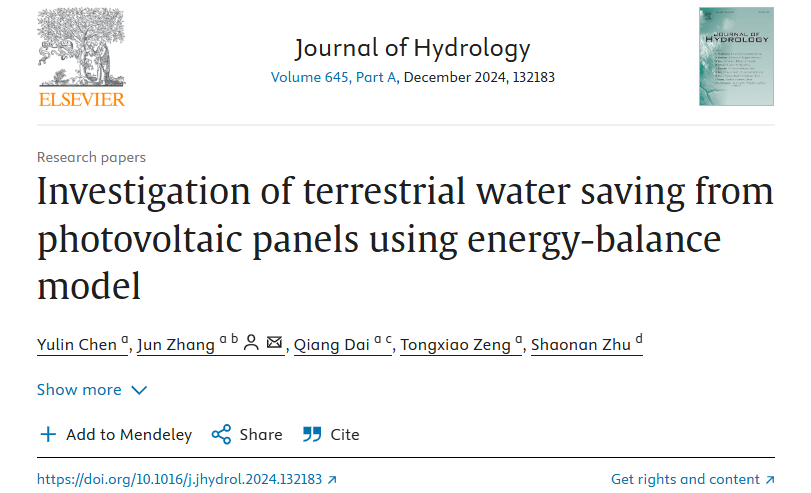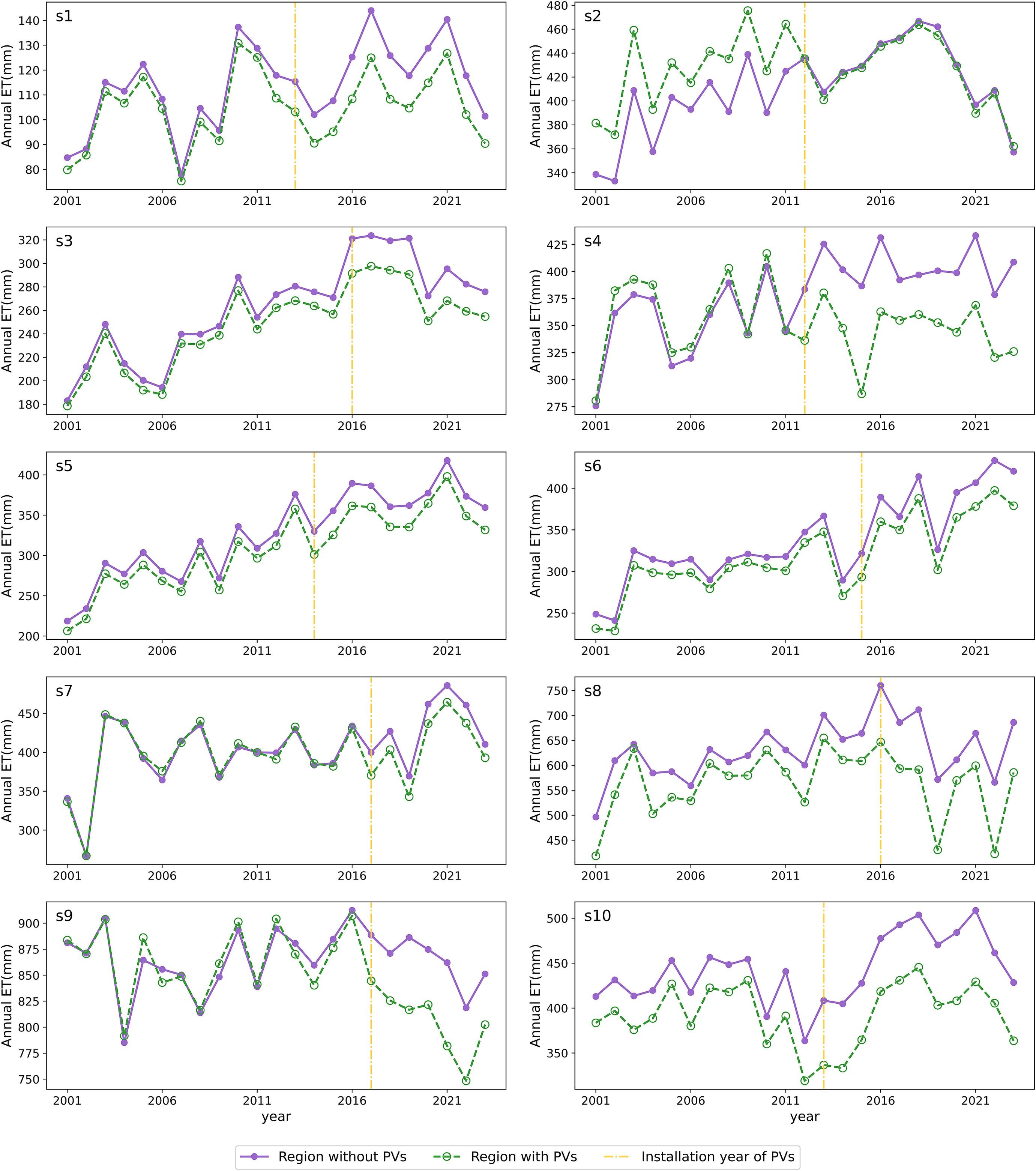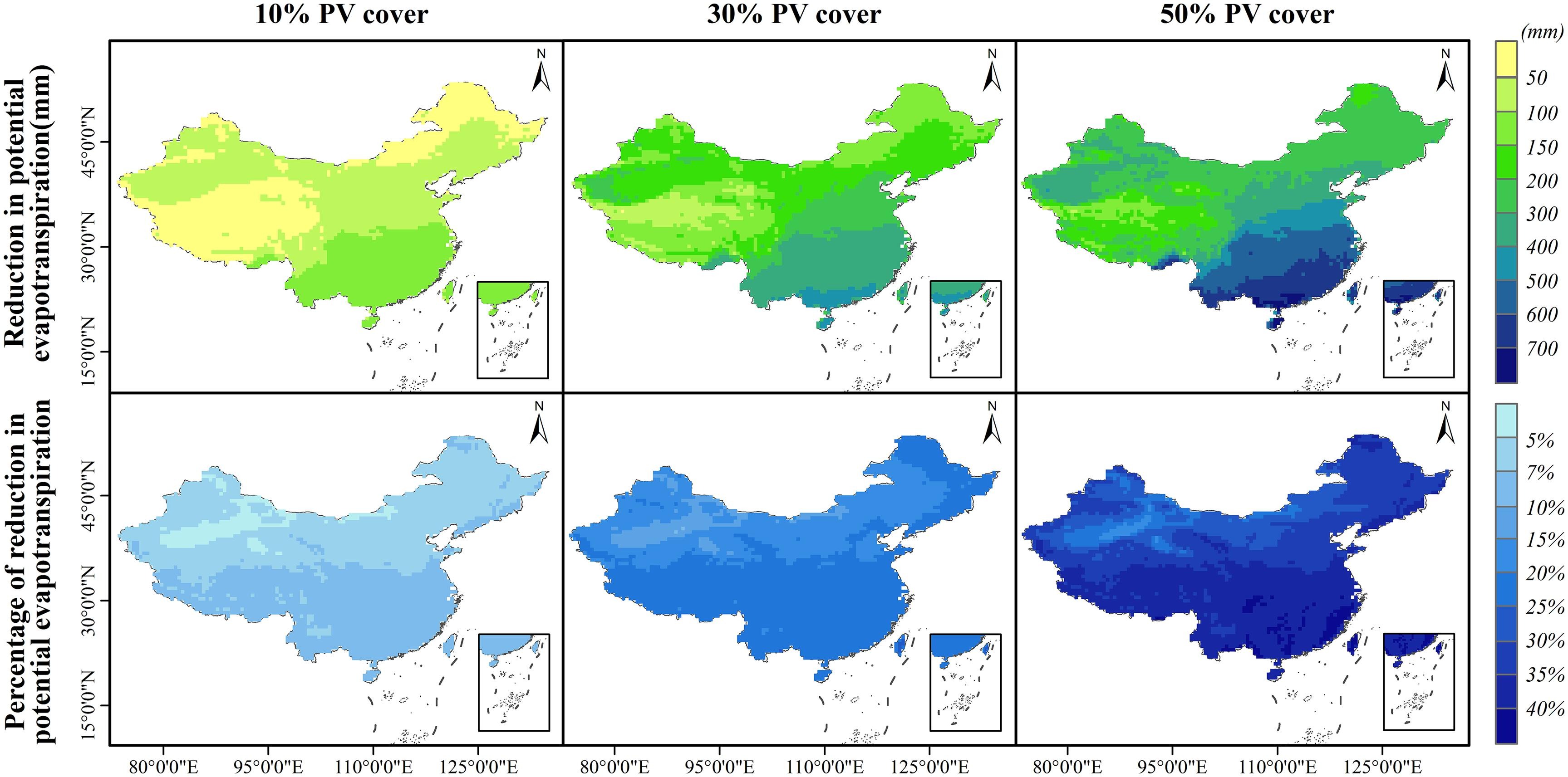TThe group has made research progress in the area of photovoltaic panel effects on terrestrial evapotranspiration:

Photovoltaic (PV) power generation maintains a high growth trend as the demand for renewable energy increases. Numerous studies have found that photovoltaic power generation has a significant effect on local microclimate and evapotranspiration from water bodies, but there is a lack of research on the large-scale effects of photovoltaic panels on terrestrial evapotranspiration. To address this issue, Yulin Chen, a PhD student of the team, published her research results entitled “Investigation of terrestrial water saving from photovoltaic panels using energy-balance model” in October 2024 in the Journal of Hydrology.
Using China as the study area, this study aims to investigate the effect of PV panel coverage on large-scale terrestrial evapotranspiration (ET). Using the MOD16 dataset, the changes in ET from 2001 to 2023 were verified for 10 sites in China where PV panels were installed. It was found that evapotranspiration (ET) was significantly reduced in the areas covered by PV panels after the installation of PV panels, and the average ET reduction ranged from 3% to 18%.

Using the Penman-Monteith method, the changes in potential ET under different PV coverage were investigated. The results showed that both ground and water potential evapotranspiration (PET) showed a significant decreasing trend with the increase of PV panel coverage, and the percentage of PET reduction for ground PV panels was 6.76%, 20.28% and 33.80% at 10%, 30% and 50% coverage, respectively; and the percentage of PET reduction for water PV panels was 7.92%, 23.74% and 39.56%.

The experiment further assessed the impact of PV panels on terrestrial water conservation using real ETs. The results showed that the introduction of PV panels produced significant gains in terrestrial water resource conservation. At 10%, 30% and 50% PV panel coverage, China could save an average of 416.01 km³, 1,082.12 km³ and 1,748.49 km³ of water per year, which is equivalent to the one-year water consumption of a population of 990 million, 2.58 billion and 4.17 billion, respectively. Through a large-scale study, this study found that the deployment of PV panels will significantly reduce terrestrial ET, especially in the southern region of China.

First author: Dr Yulin Chen
Corresponding author: Associate Professor Jun Zhang
Other authors: Prof Qiang Dai, Master's Degree Candidate Tongxiao Zeng, Lecturer Shaonan Zhu
Link to the paper: https://doi.org/10.1016/j.jHydrol.2024.132183